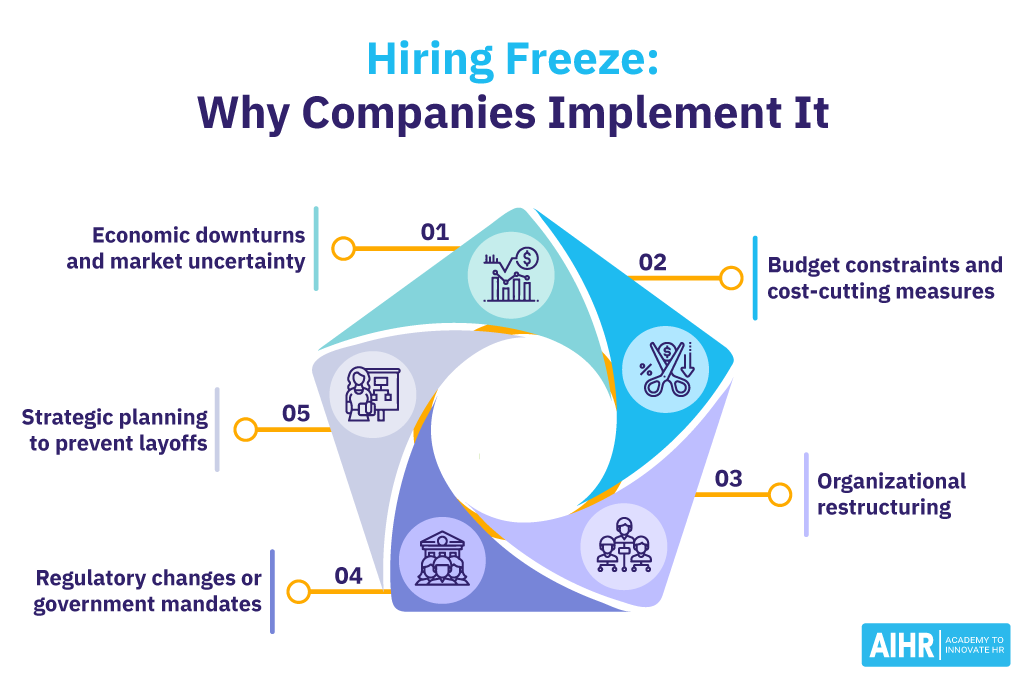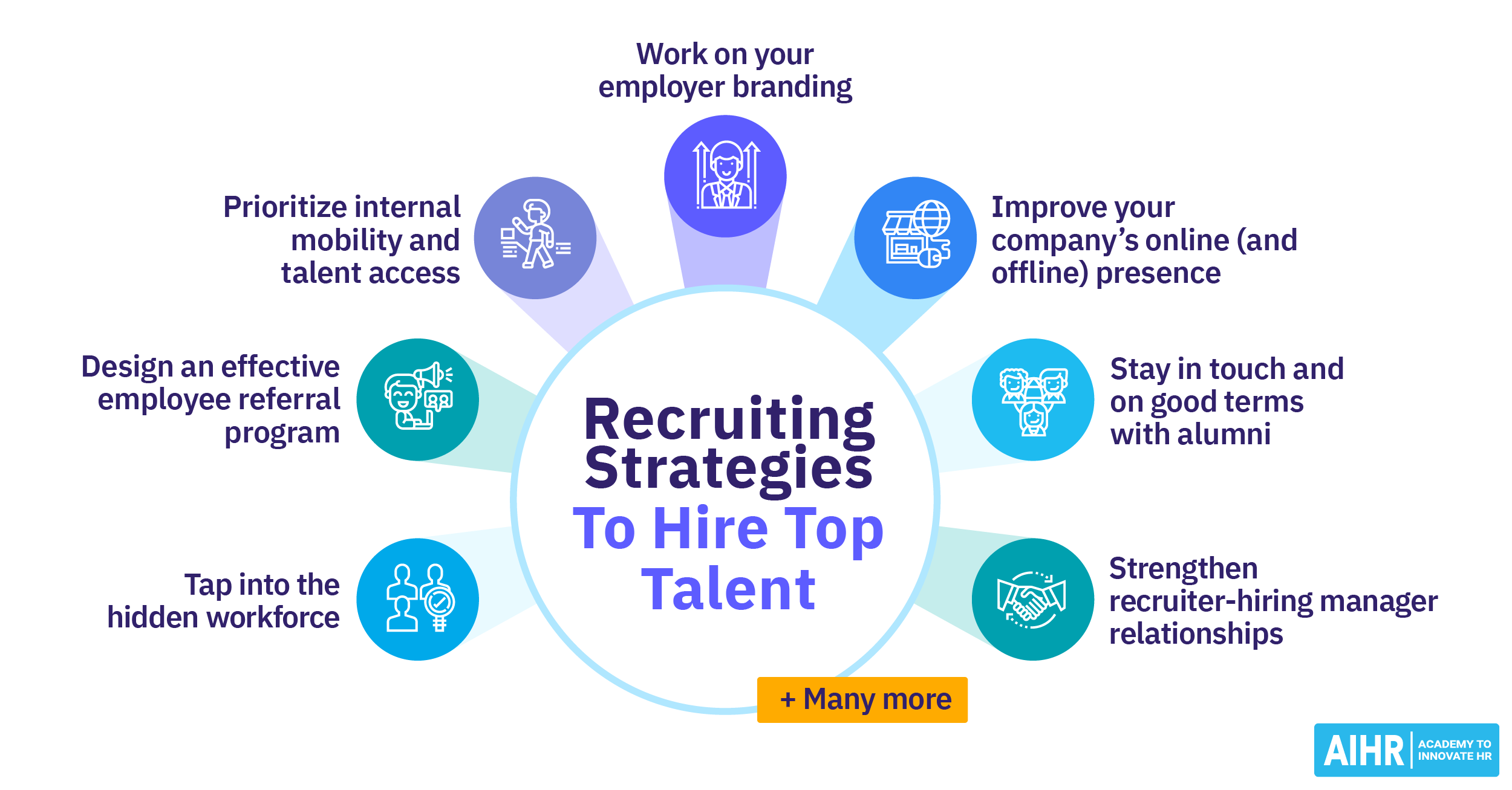Hiring Freeze
What is a hiring freeze?
A hiring freeze is a strategic choice made by an organization to temporarily cease the recruitment and hiring of new employees.
This measure is typically implemented to manage expenses or re-evaluate staffing needs in light of financial limitations, strategic workforce planning, or external economic challenges. Throughout a hiring freeze, any open positions remain unfilled, and no new roles are established, although certain exceptions may be granted for key positions. This approach is frequently employed as a preventative action to prevent layoffs while also upholding financial stability.
Hiring freeze vs. layoff
Understanding the differences between a hiring freeze and a layoff is crucial, as each approach has distinct implications for the organization and its workforce.
Definition
A temporary pause in the recruitment and hiring of new employees.
The permanent termination of employees from their job positions.
Duration
Generally short-term and reversible.
Usually permanent.
Impact on staff
No job loss; potential increase in workload or paused promotions.
Direct job loss for affected employees.
Financial implications
Aim to reduce future payroll expenses without immediate staff cuts.
Immediate reduction in payroll expenses.
Employee morale
Can increase the workload on current staff, potentially affecting morale.
Often has a significant negative impact on morale.
Why do companies implement hiring freezes?
Companies implement hiring freezes for various reasons, each reflecting a strategic response to internal and external circumstances. Here’s a synthesis of the key reasons:
- Economic downturns and market uncertainty: Companies often initiate freezes during economic downturns, market volatility, or in response to uncertain disturbances such as pandemics or geopolitical crises. These freezes allow companies to conserve resources and stabilize their financial position during unpredictable times.
- Budget constraints and cost-cutting measures: Financial prudence is the primary motive for a hiring freeze. When facing budget cuts or financial difficulties, companies may halt new hires to save on salaries, benefits, and recruitment costs, thereby reducing overall expenses.
- Organizational restructuring: Companies undergoing restructuring may implement freezes to assess their current workforce and realign roles and responsibilities. This allows them to ensure that existing employees are optimally positioned before considering new hires.
- Regulatory changes or government mandates: Sometimes, new regulations or government mandates can impact business operations, prompting companies to freeze hiring. This period is used to adapt to new requirements and reassess staffing needs accordingly.
- Strategic planning to prevent layoffs: Companies may use them as a strategy to avoid layoffs. By controlling hiring, they can manage budget constraints while retaining existing employees, thereby preventing the need for drastic workforce reductions.

How does a hiring freeze affect employees?
A hiring freeze can significantly impact existing employees in several ways:
- Increased workload: Current employees might face increased workloads without new hires to fill vacant positions or assist with growing work demands. This can lead to longer hours and more responsibilities being added to their existing roles.
- Job security concerns: The uncertainty and added stress can impact employee morale and engagement. Employees may feel insecure about their job stability and the company’s financial health.
- Negative impact on employer brand: A prolonged hiring freeze can also impact a company’s image, potentially making it more challenging to attract top talent when it is lifted.
- Potential skill gaps: Without the ability to hire new talent, skill gaps within teams or departments may become more pronounced, especially if the freeze lasts for an extended period.
Google’s hiring freeze case
During the COVID pandemic, Google announced a temporary hiring freeze, citing economic uncertainties and the need to revisit its recruitment strategy. Despite this freeze, Google strategically hired more staff in the third quarter than in the second, demonstrating a nuanced approach. This case exemplifies the flexibility in tech sector hiring, where critical needs can take precedence over broader hiring policies.
How can HR communicate a hiring freeze to employees?
Communicating a hiring freeze to employees involves several key steps, focusing on transparency, empathy, and ongoing dialogue. Here’s a step-by-step guide:
- Prepare the announcement: Begin by crafting a clear and concise message that explains the reasoning behind the hiring freeze, such as financial constraints or organizational restructuring. If possible, provide an estimated duration for the freeze and its potential impact on the organization and its employees.
- Deliver the message with empathy and transparency: When delivering the message, do so with empathy. Acknowledge that such news can create uncertainty and anxiety among employees. Be as transparent as possible about the company’s current situation and the reasons behind the decision.
- Provide support and open lines of communication: Encourage employees to voice their concerns and questions and commit to providing clear and timely responses. This open dialogue is crucial to maintaining trust and transparency.
- Ensure managerial support: Equip managers with talking points and FAQs to help them address their team’s concerns. Managers should be prepared to have open and empathetic discussions with their teams.
- Monitor and follow up: Keep monitoring the situation and provide regular updates to the employees. Whether the freeze is lifted earlier than expected or extended, timely communication is key. This not only keeps employees informed but also helps in maintaining trust and morale during challenging times.
FAQ
The duration of a hiring freeze can vary depending on the specific circumstances and needs of the company. Typically, it lasts between three to six months, but it can extend longer in certain situations. The freeze length is often influenced by factors such as market conditions, financial stability, and specific organizational needs.
No. A hiring freeze means the company temporarily stops hiring new employees, entirely or for certain positions. In contrast, a layoff involves a termination of employment for existing employees, often due to economic pressures or company restructuring.







